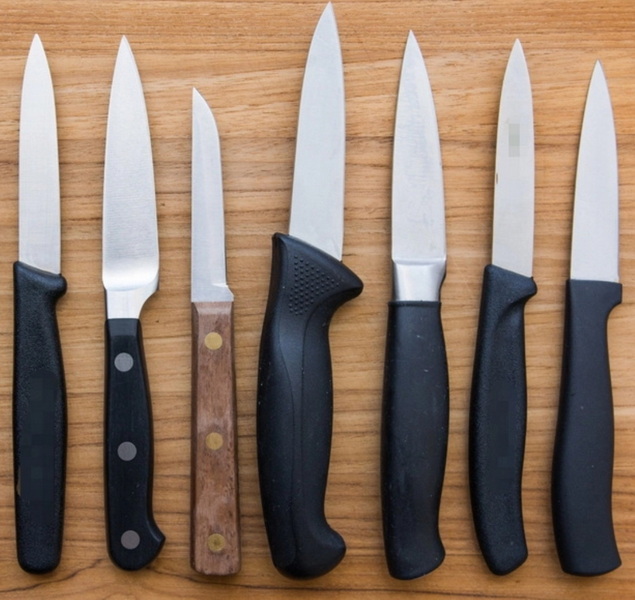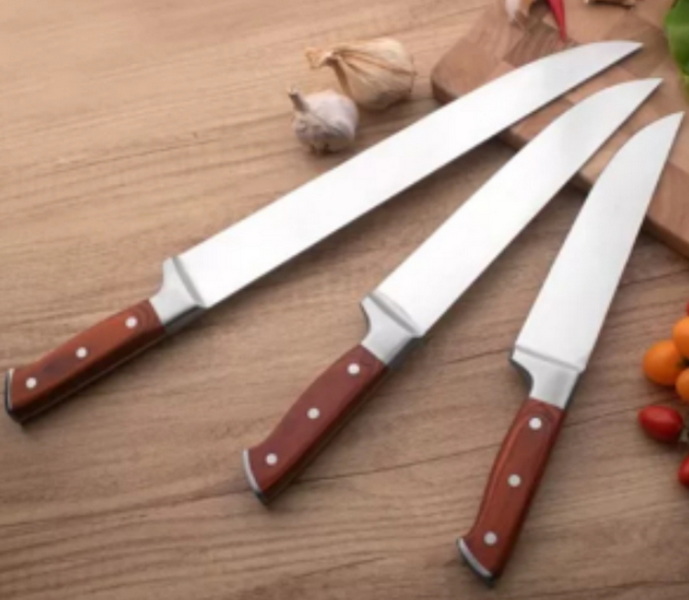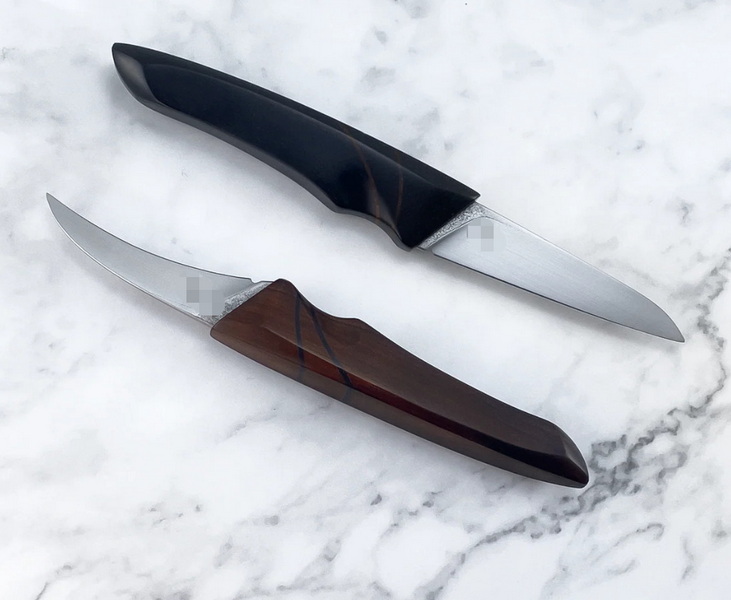- All
- Product Name
- Product Keyword
- Product Model
- Product Summary
- Product Description
- Multi Field Search
Views: 222 Author: Ann Publish Time: 2025-10-25 Origin: Site











Content Menu
>> Blade materials and finishes
>> Edge geometry and sharpening
>> Steel selection and treatments
● OEM Process & Quality Control
>> Compliance and documentation
>> Europe
>> Asia-Pacific
● FAQs
>> What materials are best for Paring Knives intended for professional kitchens?
>> How should Paring Knives be cleaned and stored to maximize longevity?
>> What is the typical lead time for a custom Paring Knife development project?
>> Can handle logos and branding be customized?
>> What is the minimum order quantity for a custom Paring Knife design?
SAAFI Custom Paring Knives represents the pinnacle of OEM collaboration between a dedicated Chinese knife factory and international brand owners, wholesalers, and manufacturers. This article delves into how Paring Knives can be tailored to meet diverse culinary traditions, market expectations, and branding requirements. Throughout, the focus remains on delivering standout Paring Knives that pair performance with compelling branding, enabling foreign partners to differentiate their offerings in a crowded global market.

Paring Knives are the precision tools of the kitchen, designed for delicate tasks that demand control and accuracy. They excel at peeling, trimming, right-sizing fruits and vegetables, deveining shrimp, and intricate garnishing. Typical blade lengths range from 3.5 to 4.5 inches, with a narrow, pointed tip ideal for detail work. The blade's geometry influences maneuverability, with a moderately thin blade balancing sharpness and resilience for repeated fine cuts. For OEM programs, this category offers a wide design space, allowing customization of blade steel, edge geometry, and finish to suit brand positioning and price targets.
- Stainless steel alloys provide corrosion resistance, ease of maintenance, and a broad price spectrum suitable for mass production.
- Carbon steel options enable exceptionally sharp edges and easier re-sharpening, with appropriate coating or treatment to combat rust.
- Damascus and laminated constructions offer aesthetic appeal and premium perception, aligning with luxury brands seeking distinct visual identity.
- Surface finishes such as satin, mirror, or matte can influence marketing narratives and user perception.
- Micro-bevels, hollow-ground edges, and polished rays influence sharpness retention and ease of maintenance.
- Selecting a bevel angle in the 15–18 degrees per side range is common for domestic kitchen use, while professional settings may benefit from slightly steeper angles for durability.
- Paring Knives require careful hand washing to maintain edge integrity and prevent corrosion on certain steels.
- Proper drying and storage protect blades and extend service life, reinforcing brand promises around durability.
OEM Paring Knives benefit from a flexible design process that aligns blade performance with customer expectations and regional cooking styles.
- A traditional spear point offers precise tip control for delicate tasks, while a curved or slightly upswept tip supports scooping and lifting small pieces.
- A thinner blade profile reduces drag in vegetable prep, enabling smoother, cleaner cuts.
- Stainless variants provide cost-effective mass production and corrosion resistance in humid kitchen environments.
- High-carbon stainless steels offer a balance of edge retention and rust resistance, suitable for professional kitchens.
- Powder metallurgy steels can deliver superior hardness and uniform properties, appealing to premium brand lines.
- Bead-blast or satin finishes reduce glare and conceal minor scratches, preserving an upscale appearance over time.
- PVD coatings can add color accents and extra corrosion resistance for specialty lines.Ergonomics & Handle Systems
A well-designed handle enhances control, comfort, and safety during long prep sessions. OEM partners often seek handles that reflect brand identity while delivering consistent performance across product families.
- Wood offers classic aesthetics and warm tactility but requires moisture management and maintenance guidance.
- High-grade polymer composites deliver durable, moisture-resistant performance and consistent ergonomics at scale.
- G-10 and other reinforced composites provide rigidity, grip reliability, and premium feel.
- Contour shaping to fit the natural grip reduces hand fatigue during repetitive tasks.
- Non-slip textures and subtle finger ridges improve control in wet conditions.
- Balanced weight distribution enhances precision in delicate operations such as peeling and trimming.
- Engraving, inlay accents, and logo placement on the handle support brand storytelling without compromising grip or hygiene.
- Colorways and patterning can be used to differentiate product lines and enable broader family branding.
Packaging is a critical touchpoint for conveying value and protecting product integrity during transit. OEM packaging strategies should reflect both practicality and brand storytelling.
- Clamshells, blister packs, or molded trays secure the blade and prevent movement during shipping.
- Anti-corrosion inserts and moisture-absorbing sachets extend shelf life in humid markets.
- Printed cartons with brand imagery, care instructions, and usage tips reinforce the product narrative.
- Environmental considerations such as recycled materials and minimal plastic use align with sustainability narratives.
- Custom labeling, color schemes, and graphic motifs create a cohesive brand presence across multiple SKUs.
- Insert cards featuring care guides, warranty terms, and recipe suggestions add perceived value for buyers.
- Packaging can be designed to integrate with knife blocks or sets, providing a turnkey solution for retailers.
- Compatible block docking or protection solutions safeguard the blade while enabling elegant display.

A transparent, client-focused OEM process ensures timely delivery, consistent quality, and alignment with international standards.
- Early-stage workshops clarify target markets, price bands, regulatory constraints, and branding goals.
- Design briefs specify blade geometry, handle style, packaging, and branding assets.
- Rapid prototyping accelerates validation of ergonomics, balance, and cutting performance before mass production.
- Sample sets allow testing across regional kitchens to validate functionality and consumer acceptance.
- Process controls ensure consistency across large runs, including blade straightness, edge uniformity, and surface finish.
- Final inspections verify dimensions, corrosion resistance, and packaging integrity.
- Documentation supports international shipments, including material declarations, safety data sheets, and labeling compliance.
Real-world examples illustrate how Paring Knives adapt to different culinary contexts and consumer preferences.
- Emphasis on hygienic design, easy maintenance, and compatibility with common kitchen decor trends.
- Branding focuses on precision and reliability for home cooks and culinary professionals alike.
- Materials and finishes highlight corrosion resistance and premium aesthetics.
- Packaging emphasizes sustainable materials and clear usage guidance.
- Emphasis on balance between traditional knife craft and modern mass production capabilities.
- The design language may incorporate regional motif cues and color palettes.
SAAFI Custom Paring Knives encapsulates the power of OEM collaboration to deliver precisely engineered Paring Knives aligned with brand strategy, culinary applications, and global market needs. By uniting thoughtful blade design, ergonomic handles, and packaging that communicates quality and value, foreign brands can rapidly expand their offerings while maintaining strict control over performance and aesthetics. The approach outlined in this article demonstrates a clear pathway from concept to market, supported by robust quality control, compelling visual content, and accurate, informative product literature. We invite you to explore how SAAFI Custom Paring Knives can help you differentiate your portfolio with precision, reliability, and brand storytelling that resonates with professional kitchens and home cooks alike.

- High-carbon stainless steels often provide a balance of edge retention, corrosion resistance, and ease of maintenance, making them a popular choice for professional kitchens.
- Hand wash with mild detergent, dry thoroughly, and store in a protective sheath or knife block to prevent dulling and corrosion.
- Lead times vary by complexity and volume, but a typical OEM project progresses through concept, prototype, validation, tooling, and ramp-up phases over 8–16 weeks.
- Yes, branding can be applied through engraving, inlays, colorways, and logo placement on the handle, while maintaining grip integrity and hygienic standards.
- MOQ varies by material, finish, and packaging complexity but is typically set to balance production efficiency with market entry needs; we can tailor MOQs to your distribution plan.
The Ultimate Professional Knives for Halal Butchery in Middle Eastern Kitchens
Chef Knife Size Guide: Choosing Between 6″, 8″, 10″, And 12″
Custom Knife Handles: How To Design A Chef Knife That Fits Your Hand Perfectly
Chef Knife Surface Treatments Guide: From Polished Migaki To Damascus Patterns
Inside Our Professional Knife Sample Room: Quality You Can See
Universal Knife Block Buying Guide: Modern Acrylic & ABS Knife Holders for Professional Kitchens
Universal Knife Block: The Complete Guide To Modern, Hygienic Knife Storage
The Complete Guide To Red Handle Knife Sets: Style Meets Functionality in The Kitchen
Professional Knives for Halal Butchery And Middle Eastern Cuisine